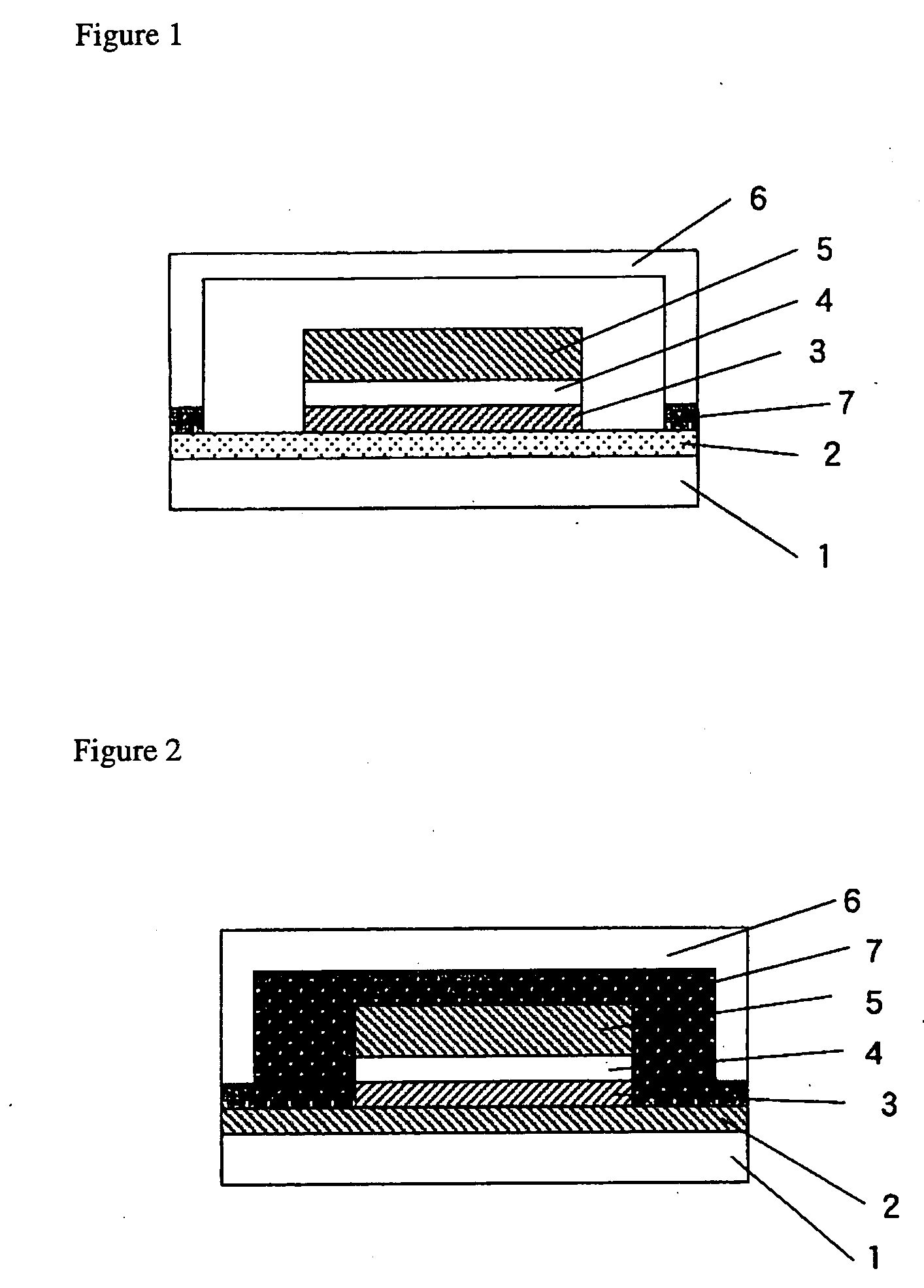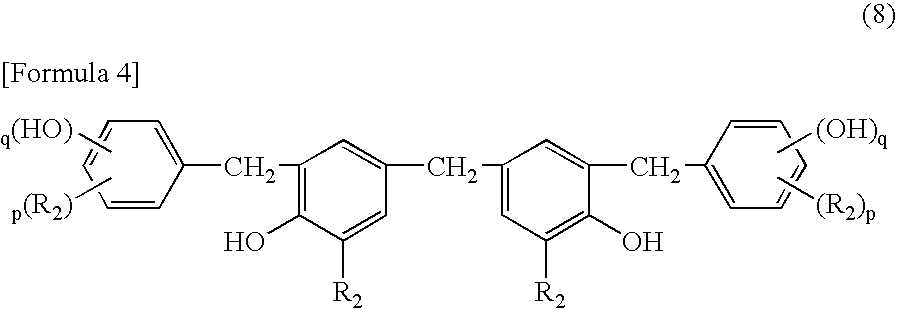Photosensitive composition and cured products thereof
a technology of composition and cured products, applied in the field of photosensitive compositions, can solve the problems of insufficient internal curability, insufficient physical properties of cured products, and reduced reaction rate, and achieve the effect of excellent photocurability and good adhesion
- Summary
- Abstract
- Description
- Claims
- Application Information
AI Technical Summary
Benefits of technology
Problems solved by technology
Method used
Image
Examples
example 1
[0097] A photosensitive composition was obtained by thoroughly mixing 100 parts of 3,4-epoxycyclohexylmethyl-3,4-epoxycyclohexanecarboxylate as the compound (a) having two or more alicyclic epoxy groups in a molecule, 6 parts of a p-tert-butyl-phenol novolac resin (PAPS series: manufactured by Asahi Organic Chemicals Industry Co., Ltd.) in which the content of a phenol compound having 3 to 5 phenolic aromatic rings is 50 percent by weight as the polynuclear phenol compound (b), and 2 parts of TEPBI-S (trade name: manufactured by Nippon Shokubai Co., Ltd.) of an iodonium salt type as the energy beam-sensitive cationic polymerization initiator (c). The composition was applied using a bar coater on substrates each composed of glass, aluminum, an OPP film and PET to form a film having a thickness of 4 μm. Then, each film was exposed by a 400 W high pressure mercury lamp exposure machine (manufactured by Sen Lights Corporation), and photo-curability of the coated film and physical proper...
example 2
[0098] A photosensitive composition was prepared by further using 14 parts of hydroxyethyl vinyl ether as the hydroxyl group-containing compound (d) in Example 1, and then photo-curability of the photosensitive composition and physical properties of the cured film thereof were evaluated. The results are shown in Table 1.
example 3
[0099] A photosensitive composition was prepared by replacing 2 parts of TEPBI-S with 4 parts of UVI-6990 (about 50 percent solution of propylene carbonate: manufactured by The Dow Chemical Company) of a sulfonium salt type as the component (c) and replacing 14 parts of hydroxyethyl vinyl ether with 18 parts of 4-hydroxybutyl vinyl ether as the compound (d), in Example 2, and then photo-curability of the photosensitive composition and physical properties of the cured film thereof were evaluated. The results are shown in Table 1.
PUM
| Property | Measurement | Unit |
|---|---|---|
| Percent by mass | aaaaa | aaaaa |
| Percent by mass | aaaaa | aaaaa |
| Percent by mass | aaaaa | aaaaa |
Abstract
Description
Claims
Application Information
 Login to View More
Login to View More - R&D
- Intellectual Property
- Life Sciences
- Materials
- Tech Scout
- Unparalleled Data Quality
- Higher Quality Content
- 60% Fewer Hallucinations
Browse by: Latest US Patents, China's latest patents, Technical Efficacy Thesaurus, Application Domain, Technology Topic, Popular Technical Reports.
© 2025 PatSnap. All rights reserved.Legal|Privacy policy|Modern Slavery Act Transparency Statement|Sitemap|About US| Contact US: help@patsnap.com



